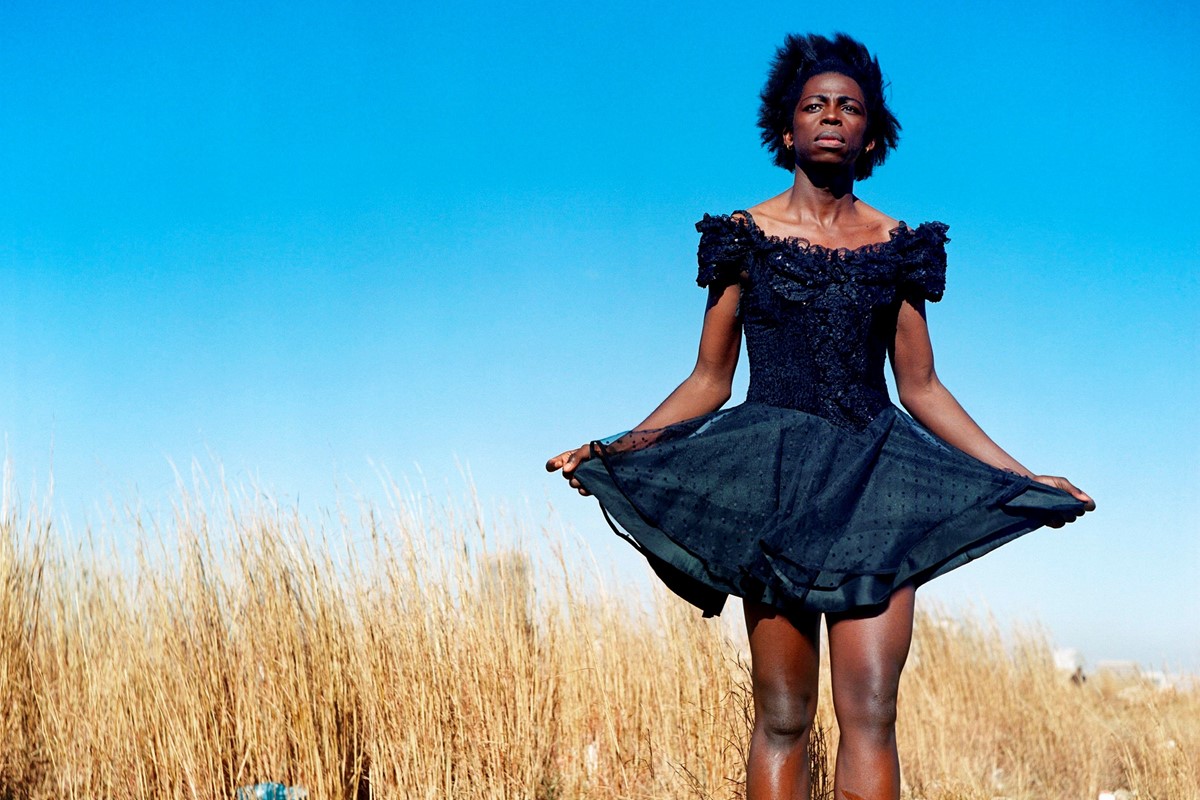Gypsy
2006 - Photography (Photography)
Pascal Shirley
Gypsy shows an ambivalent scene, in which broken blinds and its unsmiling subject are balanced with the stilllife plentitude of watermelon slices and the beautifully lit nudity of the sitter. The room seems messy and in disrepair, but simultaneously romanticizes the scene. The fruit and the sitter suggest a robustness in contrast with the mise-en-scene. This is underscored, even, by a visual pun on the subject’s exposed breast and the lemon pointing towards the camera.
Pascal Shirley’s photographs portray a California of beaches, music festivals, families, and hipsters wandering through the hills. Shirley also shoots commercially, and this dual practice is evident in his art photographs. His subjects are often attractive and well-dressed, and his compositions framed and illuminated accordingly. Shirley’s photographs are understood most readily in the context of portrait photography. Many of his images draw the viewer’s attention to the personality and history of the subject.
Colors:
Related works featuring themes of: » Contemporary Realist Portraiture, » Color Photography, » Cultural Commentary, » Calarts

© » ANOTHER
Zanele Muholi
Zanele Muholi’s Potent Portrait of South Africa’s Queer Community | AnOther As their new exhibition opens in San Francisco, Zanele Muholi talks about their powerful photos of queer survivors of hate crimes, couples in everyday moments, and self-portraits referencing history February 02, 2024 Text Emily Steer Zanele Muholi creates potent portraits...

© » KADIST
Zanele Muholi
2014As a visual activist for the rights of Lesbian, gay, bisexual, transgender, queer and intersex (LBGTQI), Muholi’s photographs radically transgress the conventional perception of lesbian and transgender communities in South Africa...

© » KADIST
Mike Kelley
1996Towhead n’Ganga, enclosed in darkness, lorded over by the sexualized folded high priestless form reflects many of Kelley’s works, in both its compositional and semantic qualities...

© » KADIST
Mario Garcia Torres
2005Mario Garcia Torres films a game of Charades among professional actors guessing the former North Korean dictator’s favorite Hollywood films...

© » KADIST
Hank Willis Thomas
2012Bread and Roses takes its name from a phrase famously used on picket signs and immortalized by the poet James Oppenheim in 1911...

© » KADIST
Glenn Ligon
2000Glenn Ligon’s diptych, Condition Repor t is comprised of two side-by-side prints...

© » KADIST
Qing Zhang
2006603 Football Field presents a soccer game played inside a small student apartment in Shanghai...

© » KADIST
Elad Lassry
2013In his composition, Chocolate Bars, Eggs, Milk, Lassry’s subjects are mirrored in their surroundings (both figuratively, through the chocolate colored backdrop and the brown frame; and literally, in the milky white, polished surface of the table), as the artist plays with color, shape, and the conventions of representational art both within and outside of the photographic tradition...

© » KADIST
Hank Willis Thomas
2014Shot in black and white and printed on a glittery carborundum surface, Black Hands, White Cotton both confronts and abstracts the subject of its title...

© » KADIST
Hank Willis Thomas
2013The image is borrowed from protests during Civil Rights where African Americans in the south would carry signs with the same message to assert their rights against segregation and racism...

© » KADIST
Elad Lassry
2012The black-and-white photograph Men (055, 065) (2012) depicts two similarly built young men – young and slim, with dark tousled hair and a square jaw line – seated aside one another in identical outfits...

© » KADIST
Doug Aitken
2009The version of Frontier acquired by the Kadist Collection consists of a single-channel video, adapted from the monumental installation and performance that Aitken presented in Rome, by the Tiber River, in 2009...

© » KADIST
Tony Oursler
2012Continuing Oursler’s broader exploration of the moving image, Absentia is one of three micro-scale installations that incorporate small objects and tiny video projections within a miniature active proscenium...

© » KADIST
Hank Willis Thomas
2012Like many of his other sculptural works, the source of I am the Greatest is actually a historical photograph of an identical button pin from the 1960s...

© » KADIST
Catherine Opie
1994Although best known as a provocateur and portraitist, Opie also photographs landscapes, cityscapes, and architecture...

© » KADIST
John Baldessari
1991The voids in Baldessari’s painted photographs are simultaneously positive and negative spaces, both additive and subtractive...

© » KADIST
Edgar Arceneaux
2006Untitled (Wheelchair Drawing) is a ten-foot photo transfer of the image of a wheelchair with burning embers in its seat...

© » KADIST
Zanele Muholi
2014As a visual activist for the rights of Lesbian, gay, bisexual, transgender, queer and intersex (LBGTQI), Muholi’s photographs radically transgress the conventional perception of lesbian and transgender communities in South Africa...


